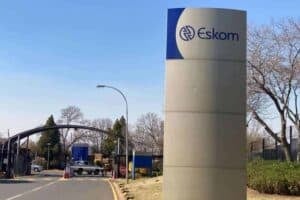Eskom has now disclosed details about ‘design defects’ at the plants, which aren't finished being built yet.

Eskom general manager for group technical Titus Mathe disclosed to Moneyweb on Friday that the cost to fix “design defects” at Eskom’s new Medupi and Kusile power plants could be as high as R8 billion.
This comes after Eskom CEO Phakamani Hadebe gave a cost estimate of R1.5 billion in November, and Bloomberg reported last week that Eskom had put it at R2 billion in an emailed response to questions.
Speaking at a National Energy Regulator (Nersa) public hearing about Eskom’s application for a tariff increase of 15% per annum for the next three years, Mathe said the Medupi and Kusile units that are in commercial operation are significantly underperforming and might take years to fix.
In a video interview with Moneyweb afterwards. he said the cost could amount to R8 billion. Eskom would try to recover this from the contractor through a claims process that Mathe acknowledged could be lengthy and complex.
He told Moneyweb the R8 billion has already been included in the current planning for funding drawdowns and should not result in a further increase in the overall budget to complete the projects.
Fixing the new plant is the first priority on Eskom’s nine-point recovery plan, he said.

Medupi
At Medupi three units are currently in commercial operation.
Unit 6, which was the first to be completed, seems to be underperforming significantly. It was taken out of service for three months last year after unplanned outages on the unit exceeded 40% in August.
According to Mathe, the outage was for inspections in terms of the guarantee agreement but was extended to attend to problems with the spray water flow. “The contractor proposed some solutions which Eskom is currently evaluating,” he said.
Since the beginning of the financial year on April 1, there have been a total of 66 unit trips at Medupi’s three commercially operating units.
Kusile
Only one of Kusile’s six units is in commercial operation, and it is performing at an energy availability level of below 50%, Mathe said. It has had 18 trips so far this financial year.
Common problems
He said most issues were common to both Medupi and Kusile and were technical or design-related, or process or people-related. Several of these issues were also impacted on by poor-quality coal.
The boiler design results in high temperatures at the reheater stage. The spray water system is unable to cope under certain operating conditions, which results in trips.
Other problems at the plant include excessive wear of bags and ash accumulation due to the design of the fabric filter plant. This results in frequent bag replacements, ash blockages, trips, load losses and emissions-related load losses.
At the milling plant none of the mills in commercial operation meets the technical requirements, Mathe said. They require servicing every 8,000 to 12,000 hours, which is half the design period. This means the plant has to be taken out of service more frequently for planned maintenance.
The gas heater performance and fouling does not meet the requirements in terms of temperature gradient, erosion, failures and ash carryover to clean air sides.
At the dust-handling plant there is high ash accumulation as well as leaks, poor commissioning and lack of spares due to business constraints at the original equipment manufacturer (OEM). The plant requires more frequent maintenance, Mathe said.
Hardware failure in the distributed control centre causes plant trips and the performance does not meet technical requirements. Mathe said the corrective maintenance programmes were ineffective.
There are high vibrations on the generator auxiliary cooling loop as a result of undamped connections to the turbine.
Over and above this, the planning and logistics of maintenance are complicated by ongoing construction work on site.
Mathe said specialist Eskom technical teams had been assembled to develop solutions and workstreams with contractors to jointly evaluate the solutions.
Design defects
He told the public hearing the design defects were detected after the plants were commissioned.
Mathe said the designs were done around 2006/07; Eskom would have wanted more time to do tests with real coal at the time, but due to the delay in the decision to build the new power stations, there was not enough time upfront.
He said Eskom would spend the next six months deciding on how to fix the problems. Thereafter, negotiations with contractors about the proposed solutions and the allocation of costs could take another 18 months.
When the actual work starts after about two years, one unit would have to be taken out of operation – for two to three months at a time – before all 12 would be operating optimally, Mathe said.
The Nersa panel asked Eskom to revert with more information about problems at its other new power station, the Ingula Pumped Storage Scheme.
Brought to you by Moneyweb









